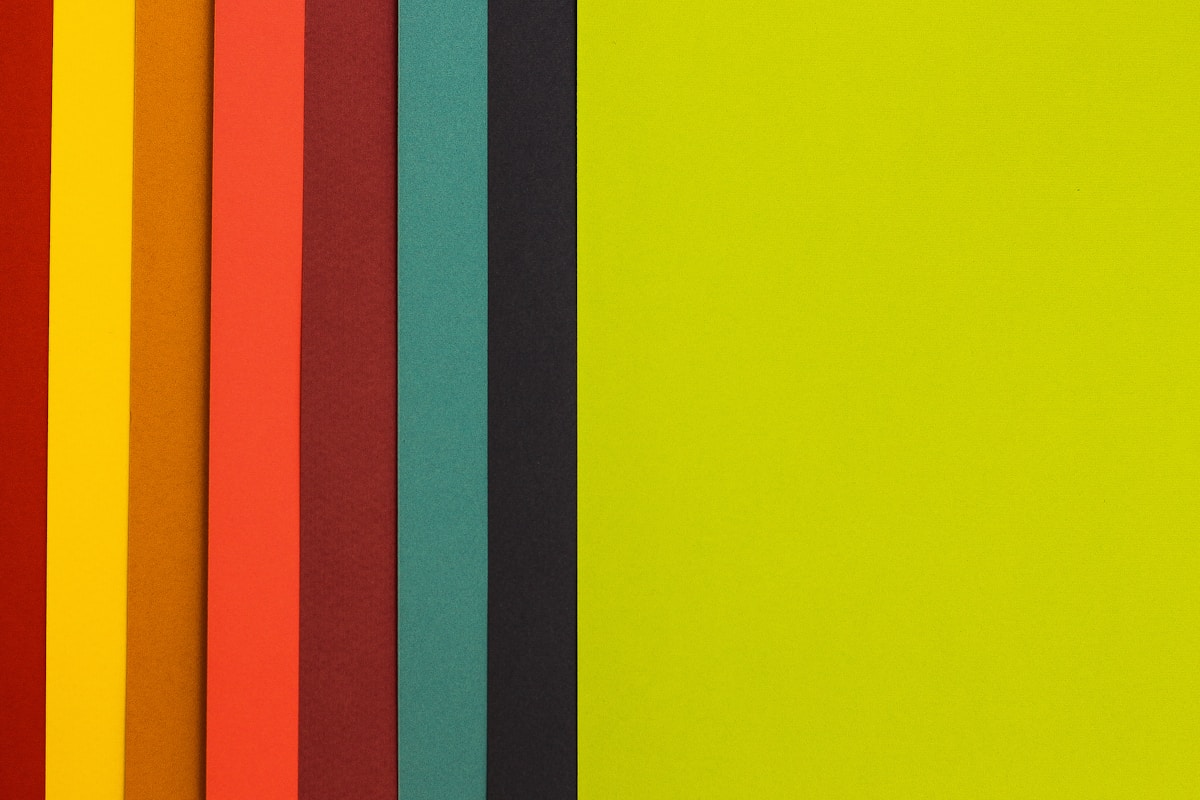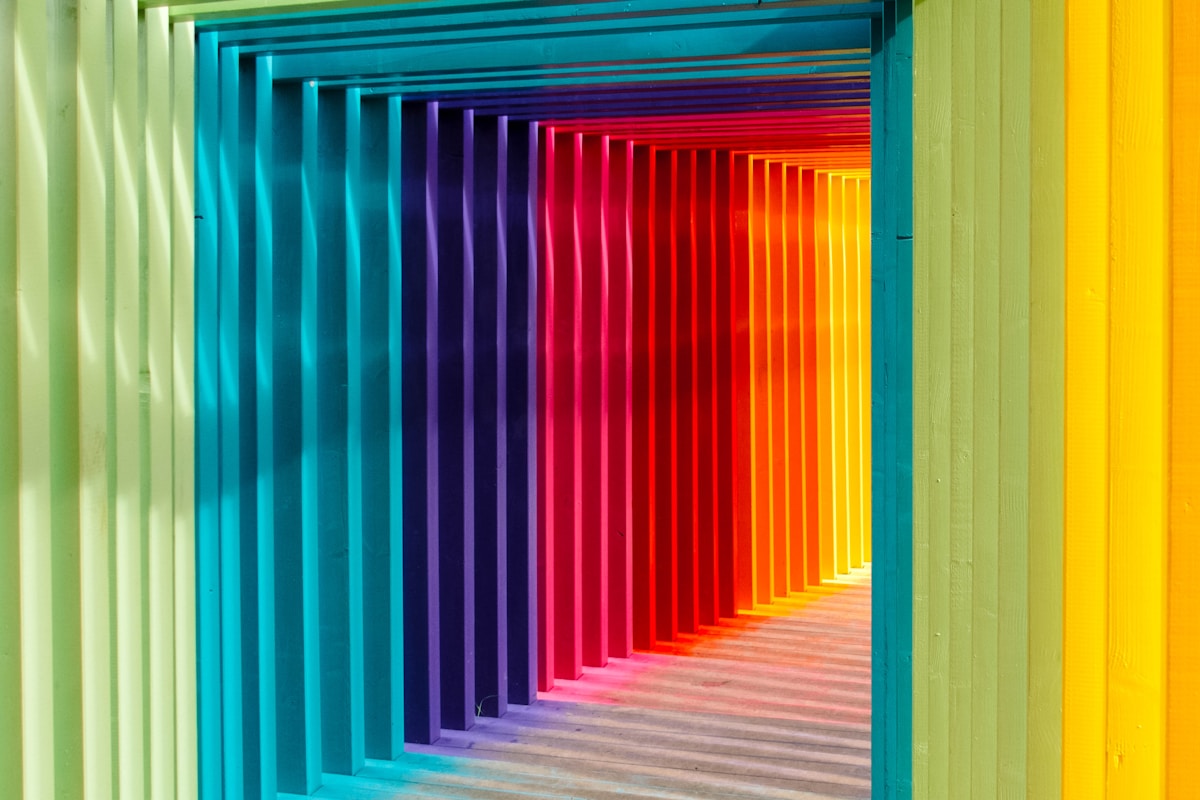Unlocking Emotions: A Guide To Color Psychology In Marketing
Unlocking Emotions: A Guide To Color Psychology In Marketing

Color psychology is powerful in marketing, as it can evoke emotions and influence consumer behavior. Understanding how color impacts our emotions and perceptions can enhance marketing strategies and create a strong brand identity. In this guide to color psychology in marketing, we will explore the power of color, how it unlocks emotions, and its impact on consumer behavior.
The Power Of Color Psychology In Marketing
Color is a fundamental element of visual communication and can be used strategically to grab attention, convey messages, and create memorable consumer experiences. Using color in marketing has been proven to increase brand recognition by up to 80% and improve comprehension by 73%. Harnessing the power of color psychology can help marketers tap into people's subconscious associations with different colors.
How To Unlock
Emotions With Color?
Colors can evoke specific emotions and feelings within individuals. For instance, bright hues like red and orange might arouse feelings of urgency or excitement, but cool hues like blue and green can inspire peace or confidence. Understanding these emotional responses can help marketers strategically use colors to elicit desired reactions from their target audience.
The Impact Of Color On Consumer Behavior
Color significantly impacts consumer behavior as it influences purchasing decisions, brand perception, and overall customer experience. Studies have shown that 85% of consumers base their purchasing decisions on color alone. Additionally, research suggests that certain colors are more likely to attract specific demographics or convey certain brand attributes. Leveraging this knowledge helps marketers effectively communicate their brand values and connect with their target audience.
In this guide to color psychology in marketing, we will delve deeper into the basics of color psychology, explore the psychological effects of different colors, discuss the role of color in branding and marketing, provide practical tips for implementing color psychology strategies effectively, analyze successful marketing campaigns through case studies, and offer insights on conducting color research and testing.
Now, let's dive into the basics of color psychology and explore how different colors can impact our emotions, perception, and consumer behavior.
What Is Color Psychology?

Color psychology is crucial in marketing, as it can influence consumer behavior and evoke specific emotions. Businesses can effectively utilize color to enhance their marketing strategies by understanding the basics of color psychology, exploring the psychological effects of different colors, and recognizing the role of color in branding and marketing.
The Basics Of Color Psychology
Color psychology is the study of how colors affect human emotions and behavior. Different colors have distinct psychological associations, which can be utilized strategically in marketing campaigns. For example, warm colors like red and orange are often associated with energy, excitement, and passion, while cool colors like blue and green evoke calmness and tranquility.
When it comes to marketing, understanding the basics of color psychology is essential for creating a strong brand identity and eliciting desired emotional responses from consumers. Businesses can effectively communicate their brand values and connect with their target audience on a deeper level by choosing the right colors for logos, packaging, advertisements, and websites.
The Role Of Color In Branding And Marketing
Color plays a significant role in branding and marketing by influencing consumer perception and behavior. It helps businesses establish a visual identity that distinguishes them from competitors and creates brand recognition. Consistency in color usage across all marketing channels is crucial for building a strong brand image.
In addition to creating brand recognition, color can evoke specific emotions or associations that align with a company's values or product offerings. For example, a health food brand may use green to convey freshness and natural ingredients. At the same time, an energy drink company might opt for vibrant colors like red or orange to evoke excitement and energy.
Strategically incorporating color psychology into their branding and marketing strategies can help businesses effectively communicate their message, emotionally connect with their target audience, and drive consumer behavior toward their desired outcomes.
Applying Color Psychology In Marketing

Using Color To Evoke Positive Emotions
Incorporating the right colors in marketing materials can have a powerful impact on evoking positive emotions in consumers. Warm colors like red, orange, and yellow are often associated with excitement, energy, and happiness. These colors can be used strategically to grab attention and create a sense of urgency. For example, red in a red call-to-action button can encourage consumers to act immediately.
On the other hand, cool colors like blue and green are known for their calming and soothing effects. These colors can be used to create a sense of trust and reliability. Brands that want to establish themselves as trustworthy can utilize blue in their logos or website design.
It's important to note that color preferences may vary among different cultures and individuals. Conducting thorough research on the target audience is crucial to ensure the chosen colors align with their preferences and evoke the desired emotions.
Creating A Strong Brand Identity With Color
Color plays a vital role in establishing a strong brand identity. Consistency in color usage across different marketing channels helps consumers recognize and associate specific colors with a particular brand. Consistency builds brand recognition, trust, and loyalty over time.
For instance, McDonald's has successfully combined yellow and red to create instant recognition worldwide. The vibrant yellow arches against the red background catch attention and evoke feelings of happiness and excitement associated with fast food dining.
When choosing colors for branding, it's essential to consider the emotional associations and how well they align with your brand values, personality, and target audience preferences.
Utilizing Color Psychology In Advertising And Design
Color psychology is not limited to branding alone but extends into advertising campaigns and design elements. Understanding how different colors affect consumer behavior allows marketers to make informed decisions when creating advertisements or designing web pages.
For example, green is often associated with nature, health, and freshness. Brands promoting eco-friendly products or services can use green to convey a sense of sustainability and environmental consciousness. Similarly, luxury brands often incorporate gold or silver to signify elegance and exclusivity.
In advertising, colors can strategically direct attention or evoke specific emotions. Bright and contrasting colors can grab attention, while muted or pastel shades can create a more calming effect. Marketers can create impactful advertisements that resonate with their target audience by combining color psychology principles with compelling copywriting and design techniques.
Understanding the principles of marketing color psychology helps businesses effectively utilize colors to evoke emotions, establish a strong brand identity, and create impactful advertising campaigns. The strategic use of color can significantly influence consumer behavior and drive success in marketing efforts.
The Science Behind Color Choices

Color perception is heavily influenced by cultural and contextual factors, which play a significant role in shaping our understanding and emotional response to different colors. Understanding these influences is crucial for effective color psychology in marketing.
The Cultural And Contextual Influences On Color Perception
Cultural differences can significantly impact how colors are perceived and interpreted. For example, while white is associated with purity and weddings in Western cultures, it represents mourning in many Eastern cultures. Similarly, red can symbolize luck and prosperity in China but may signify danger or caution in other parts of the world.
Context also plays a vital role in color perception. The same color can evoke different emotions depending on where it is used. For instance, blue may convey a sense of calmness when used in healthcare settings but may be associated with sadness or coldness when used in retail.
Understanding cultural and contextual influences allows marketers to tailor their color choices to specific target audiences and effectively communicate their brand message.
The Importance Of Color Consistency Across
Marketing Channels
Maintaining color consistency across various marketing channels is essential for brand recognition and recall. When consumers encounter consistent colors associated with a brand across different platforms such as websites, social media, print materials, and physical stores, it reinforces brand identity and enhances brand perception.
Consistency also helps create a cohesive visual experience for consumers, making it easier for them to recognize and remember the brand. Consistency builds trust and familiarity over time, positively influencing consumer behavior.
Businesses should establish clear brand guidelines that outline specific color palettes to be used consistently across all platforms to ensure color consistency across marketing channels.
Analyzing The Color Psychology Chart For Marketing Success
The color psychology chart is a valuable tool for marketers making strategic color choices that align with their marketing objectives. The chart categorizes colors based on the emotions they typically evoke:
- Red. Symbolizes energy, passion, and urgency. It can be used to grab attention and create a sense of excitement.
- Blue. It conveys trust, reliability, and calmness. Brands in industries such as finance and healthcare often use it.
- Green. It represents nature, growth, and harmony. It is commonly associated with eco-friendly or sustainable brands.
- Yellow. The color symbolizes optimism, happiness, and warmth. It can be used to create a sense of positivity and cheerfulness.
- Purple. It evokes feelings of luxury, creativity, and spirituality. It is often used by high-end brands or those targeting a niche market.
Analyzing the color psychology chart helps marketers make informed decisions about which colors align best with their brand values and desired emotional responses from consumers.
Case Studies: Successful Marketing Campaigns

Coca-Cola: The Power Of Red In Branding
Coca-Cola is a prime example of a brand that has harnessed the power of color psychology in its marketing campaigns. The company's iconic use of red has become synonymous with its brand identity and has played a significant role in its success. Red is a color that evokes strong emotions such as excitement, passion, and energy. Coca-Cola effectively captures the attention and engages consumers' emotions by incorporating this vibrant hue into its branding.
In addition to its emotional impact, the color red also holds cultural significance. In many Western cultures, red is associated with celebration, happiness, and love. It aligns perfectly with Coca-Cola's brand image as a beverage that brings people together during joyful occasions. Whether it's their classic red cans or their holiday-themed advertisements featuring Santa Claus in his red suit, Coca-Cola consistently utilizes the power of red to create a strong emotional connection with consumers.
McDonald's: The Psychological Impact Of Yellow And Red
McDonald's is another brand that understands the influence of color psychology on consumer behavior. The fast-food giant strategically incorporates yellow and red into its branding to evoke specific emotions and drive customer actions.
Yellow is known for its ability to grab attention and stimulate feelings of happiness and optimism. It creates a sense of warmth and friendliness, which aligns perfectly with McDonald's family-friendly image. Whether it's their golden arches or cheerful interior design, yellow attracts customers and creates an inviting atmosphere.
Red, on the other hand, stimulates appetite and creates a sense of urgency. It has been shown to increase heart rate and grab attention, making it an ideal color choice for fast-food chains. McDonald's strategically uses red in its logo, packaging, and interior design to create a sense of excitement and encourage customers to make quick purchasing decisions.
Combining the psychological impact of yellow and red, McDonald's has successfully created a strong brand identity that is instantly recognizable and appeals to consumers on both an emotional and sensory level.
Apple: The
Minimalistic Approach With White
Apple is renowned for its sleek and minimalist approach to branding, which includes using white as a dominant color. White evokes feelings of simplicity, purity, and sophistication. It creates a sense of calmness and cleanliness that aligns perfectly with Apple's minimalist design philosophy.
Apple conveys a sense of elegance and premium quality by utilizing white in its product design, packaging, and marketing materials. The simplicity of white also allows their products to stand out visually while maintaining a timeless aesthetic.
Additionally, white is a blank canvas for Apple to showcase the vibrant colors on their devices' screens. The contrast further enhances the visual appeal of their products and creates an immersive experience for consumers.
Apple's minimalistic approach with white demonstrates how color psychology can effectively create a strong brand identity that resonates with consumers seeking simplicity, elegance, and cutting-edge technology.
Tips For Effective Implementation

There are several key tips to remember to implement color psychology in your marketing strategy effectively. These tips will help you conduct thorough research and testing, design a color palette that aligns with your brand values, and incorporate color psychology into your website design using Strikingly.
Conducting Color Research And Testing
Conducting color research and testing is crucial to understanding how different colors impact consumer behavior and emotions. Here are some tips to guide you:
1. Start by researching the basics of color psychology. Familiarize yourself with the psychological effects of different colors, such as red evoking excitement or blue promoting calmness.
2. Consider your target audience. Understand the audience demographics, preferences, and cultural backgrounds to ensure the chosen colors resonate with them.
3. Test different color combinations. Use A/B testing to compare how different color palettes perform regarding engagement, conversions, and overall customer response.
4. Analyze competitor strategies. Look at successful competitors in your industry and examine their use of colors in branding and marketing campaigns.
Designing A Color Palette That Aligns With Brand Values
Designing a cohesive color palette that aligns with your brand values is essential for creating a strong brand identity. Here's how you can do it:
1. Define your brand personality. Determine the emotions and values you want to convey through your brand identity.
2. Choose colors that reflect your brand image. Select colors that align with the personality traits associated with your brand, such as trustworthiness or creativity.
3. Use a limited number of colors. Stick to a small palette of 2-4 colors to maintain consistency across all marketing materials.
4. Consider color harmony. Ensure that the chosen colors complement each other well and create a visually pleasing consumer experience.
Incorporating Color Psychology Into Website Design With Strikingly
Strikingly provides a user-friendly platform to incorporate color psychology into your website design. Here's how you can leverage this tool effectively:
1. Choose a template that complements your color palette. Select a template from Strikingly that allows you to customize colors and fonts to match your brand identity.

Image taken from Strikingly
2. Use color strategically in different elements. Use specific colors for buttons, headlines, backgrounds, and other design elements to guide user behavior and evoke desired emotions.

Image taken from Strikingly
3. Consider the psychology of white space. Utilize white space strategically to create a clean and minimalist design that enhances the impact of your chosen colors.

Image taken from Strikingly
4. Ensure mobile responsiveness. Test your website design across different devices to display the chosen colors accurately and create a consistent user experience.

Image taken from Strikingly
Conclusion
Color psychology is a potent marketing tool. Understanding how colors affect emotions and behavior can help businesses make strategic choices. Warm colors like red and orange create excitement, while cool colors like blue and green instill calmness and trust.
Incorporating color psychology into your marketing strategy is key. It builds a strong brand identity and fosters consistency across channels, reinforcing brand recognition and trust. Conduct research and testing to ensure your color choices engage your audience effectively.
Tools like Strikingly can assist in implementing color psychology in website design creating visually appealing sites that convey your brand's message and evoke desired emotions.
Embrace color psychology to elevate your marketing efforts and create memorable experiences for your audience, driving consumer-driven success.
